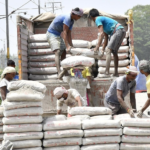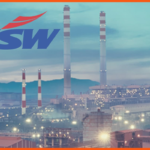Recent Posts
GST on Cement Cut to 18%: Relief for Real Estate and Affordable Housing
September 5, 2025TN Earmarks ₹1,964 Crore for Chennai Airport–Kilambakkam Metro Corridor
September 4, 2025India’s Steel Industry Faces Mixed Prospects Amid U.S. Tariffs

The U.S. government’s move to slap a 25% tariff on steel imports has evoked mixed responses from India’s steel producers. While some manufacturers view a potential drop in steel prices as a potential boon for their bottom lines, others are alarmed about the risks of “steel dumping” and environmental damage.
In the suburbs of India’s tech and industrial hub, Bengaluru, small factories echo with the sound of workers welding and casting Indian-made steel into products from car parts to kitchen sinks. For companies like Sun Techpro Engineering, which makes steel-based products, the U.S. tariffs could have bigger margins of profit, she said. “Cheaper steel prices are good for our business,” the owner of the company, B. Praveen, said. “For thousands of companies like mine, this is a good thing,” he said. Intuitively, the small and medium enterprise (SME) sector, which employs more than 200 million people, is an important part of India’s economy.
But not everyone has goodwill to spare. India is not insulated from such dumping, and it worried India would be a victim of inexpensive steel dumping as a baroque of trade restraints do not exist in India,” said Naveen Jindal chairperson of the Indian Steel Association. The potential flood of cheap steel could undermine domestic producers and undercut efforts to adopt cleaner steel-making methods. This brings us to the steel industry, responsible for as much as 12% of India’s greenhouse gas emissions as per Global Energy Monitor(GEM) and facing pressure to decarbonize.
Although the government has invested $1.72 billion to facilitate cleaner steel production, it continues to support new projects in which emissions-intensive, coal-fueled blast furnaces are used for steel-making. India’s current approach, said Henna Khadeeja, a research analyst at GEM, seems to be to scale up production first and then deal with emissions. That could complicate future exports to Europe, which is set to impose carbon border taxes on goods that are high emitters.
Easwaran Narassimhan, of the Sustainable Futures Collaborative, cautioned that India’s dependence on coal-based steel manufacturing could limit its competitiveness in global markets. At the same time, while Indian steelmakers accept the need to reduce emissions, they are wary of the costs involved. JSW Group CSO Prabodh Acharya pointed out the need for a well-rounded approach. “Steel is growth, but we have to get the balance between economic viability and decarbonization right,” he said.
India is targeting net-zero emissions by 2070, including creating 500 gigawatts of clean energy by 2030, the journey forward for the steel-making industry is still very convoluted and arduous.
- Buildwatchnews
- carbon border tax Europe
- clean energy steel production
- clean steel production India
- coal-based steelmaking
- decarbonization steel industry
- environmental impact steel
- Global Energy Monitor steel
- greenhouse gas emissions steel
- India steel industry
- Indian economy steel sector
- Indian Steel Association
- Indian steel export challenges
- Indian Steel Manufacturers
- JSW Group steel
- Naveen Jindal steel
- net-zero emissions India
- SME sector India
- steel demand India
- steel dumping in India
- Steel Import Tariffs
- Steel Industry Challenges
- steel production emissions
- Sun Techpro Engineering
- sustainable steel production.
- U.S. tariffs on steel
Recent Posts
CMRL Fast-Tracks Okkiyam Maduvu Bridge Ahead of Northeast Monsoon
September 5, 202513.3-km Elevated Corridor Planned on ECR from Tiruvanmiyur to Uthandi
September 5, 2025Categories
- AP34
- Apartments12
- Bengaluru107
- Budget 202520
- Cement97
- Chennai287
- Construction527
- CREDAI11
- Editors Pick42
- Equipment17
- Events11
- GST7
- Highways56
- Housing90
- Hyderabad36
- Industrial208
- Infrastructure306
- Interiors11
- Iron Ore15
- Karnataka20
- Kerala19
- Land59
- Market Updates195
- Metal10
- Metro84
- Mining9
- MSME9
- News1,439
- NHAI39
- Paints31
- Properties7
- Puducherry5
- Real Estate420
- Road153
- Sand16
- Short News117
- SIPCOT2
- Steel Daily321
- Stocks6
- Tamil Nadu247
- Technology32
- Telangana14
- Trade2
- Trending News1,026
- Video1
Related Articles
Vardhman Special Steels, Japan’s Aichi Steel to set up $284 mn green steel plant in Punjab
Vardhiman Special Steels Limited (VSSL) signed an agreement for collaboration with Japan’s...
ByKanmani ChokkalingamSeptember 5, 2025CMRL Fast-Tracks Okkiyam Maduvu Bridge Ahead of Northeast Monsoon
Chennai Metro Rail Limited (CMRL) is trying to complete the construction of...
ByKanmani ChokkalingamSeptember 5, 202513.3-km Elevated Corridor Planned on ECR from Tiruvanmiyur to Uthandi
The Tamil Nadu State Highways Authority (TANSHA) has invited tenders for the...
ByKanmani ChokkalingamSeptember 5, 2025Serviced Residences Expand Beyond Tier-I Cities, Emerging Strong in Tourist Destinations
The burgeoning trend in India’s real estate is investment in serviced residences-these...
ByKanmani ChokkalingamSeptember 5, 2025















Leave a comment